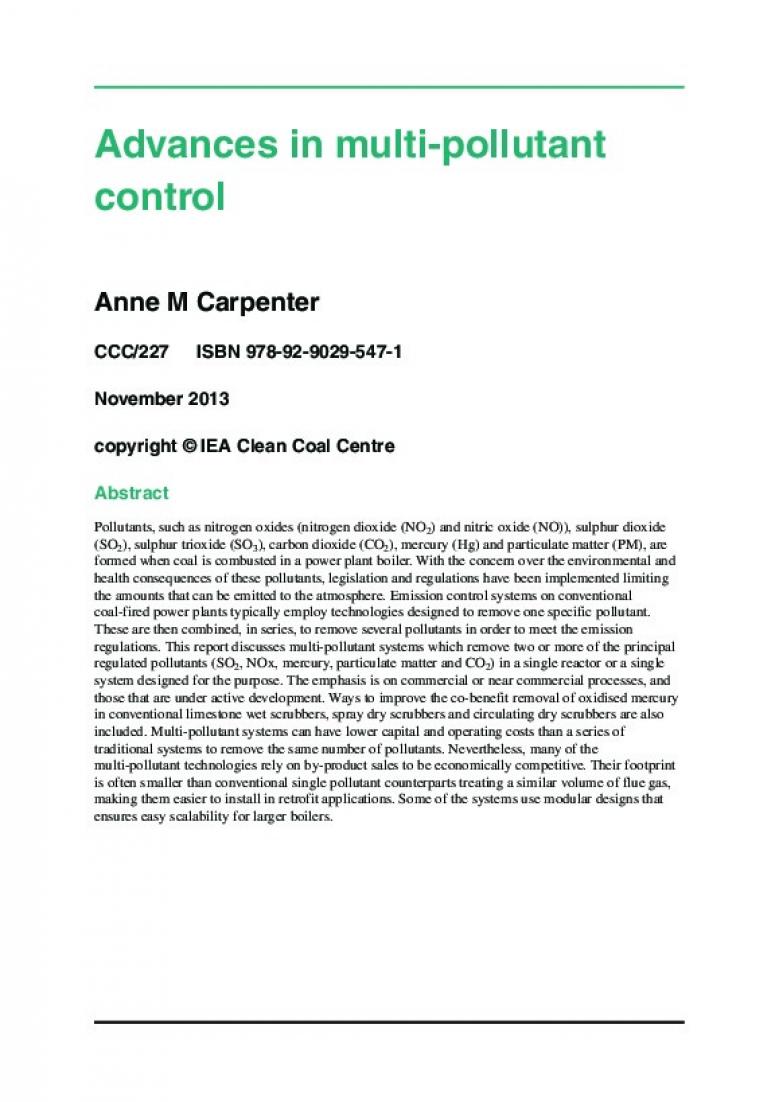CCC/227 ISBN 978-92-9029-547-1
November 2013
copyright © IEA Clean Coal Centre
Abstract
Pollutants, such as nitrogen oxides (nitrogen dioxide (NO2) and nitric oxide (NO)), sulphur dioxide
(SO2), sulphur trioxide (SO3), carbon dioxide (CO2), mercury (Hg) and particulate matter (PM), are
formed when coal is combusted in a power plant boiler. With the concern over the environmental and
health consequences of these pollutants, legislation and regulations have been implemented limiting
the amounts that can be emitted to the atmosphere. Emission control systems on conventional
coal-fired power plants typically employ technologies designed to remove one specific pollutant.
These are then combined, in series, to remove several pollutants in order to meet the emission
regulations. This report discusses multi-pollutant systems which remove two or more of the principal
regulated pollutants (SO2, NOx, mercury, particulate matter and CO2) in a single reactor or a single
system designed for the purpose. The emphasis is on commercial or near commercial processes, and
those that are under active development. Ways to improve the co-benefit removal of oxidised mercury
in conventional limestone wet scrubbers, spray dry scrubbers and circulating dry scrubbers are also
included. Multi-pollutant systems can have lower capital and operating costs than a series of
traditional systems to remove the same number of pollutants. Nevertheless, many of the
multi-pollutant technologies rely on by-product sales to be economically competitive. Their footprint
is often smaller than conventional single pollutant counterparts treating a similar volume of flue gas,
making them easier to install in retrofit applications. Some of the systems use modular designs that
ensures easy scalability for larger boilers.
| Attachment | Size |
|---|---|
| 818.22 KB |


